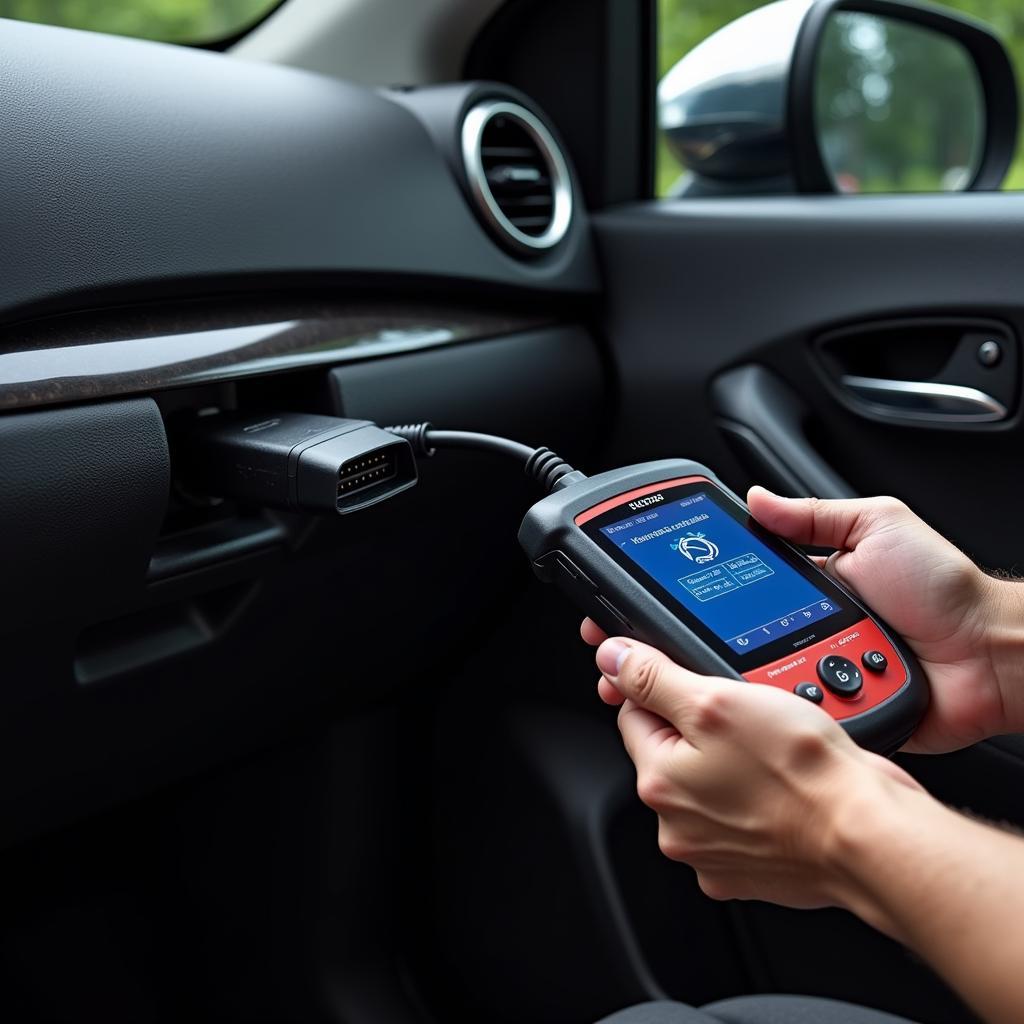Understanding your car’s health just got easier with an OBD2 scanner. This handy tool can unlock a wealth of information hidden within your vehicle’s computer system, including chassis codes. These codes offer crucial insights into the performance and potential issues related to your car’s mechanical components.
Decoding Your Car’s Chassis with an OBD2 Scanner
An OBD2 scanner, short for On-Board Diagnostics, acts as a window into your vehicle’s internal workings. By plugging into the OBD2 port, usually located under the dashboard on the driver’s side, the scanner communicates with your car’s computer and retrieves diagnostic trouble codes (DTCs). Chassis codes are a specific type of DTC related to the mechanical systems of your car.
Why Chassis Codes Matter
Chassis codes point to potential issues within your car’s chassis system, encompassing crucial components like:
- Braking System: ABS, traction control, brake fluid levels
- Suspension System: Shocks, struts, ride height sensors
- Steering System: Power steering, steering angle sensors, stability control
- Airbag System: Deployment sensors, seatbelt tensioners
Ignoring these codes can lead to safety hazards and potentially costly repairs down the line.
Common Chassis Codes and Their Meanings
While the specific code definitions can vary between car manufacturers, here are some common examples:
- C1234: ABS Wheel Speed Sensor Failure
- C1121: Steering Angle Sensor Malfunction
- C1336: Brake Fluid Level Sensor Circuit
what does obd2 test consist of
Using an OBD2 Scanner to Diagnose Chassis Codes
Using an OBD2 scanner to diagnose chassis codes is a relatively straightforward process:
- Locate your car’s OBD2 port.
- Plug in the OBD2 scanner.
- Turn your car’s ignition to the “on” position without starting the engine.
- Follow the on-screen prompts on your scanner to retrieve DTCs.
- Note down the chassis codes displayed.
- Consult your car’s repair manual or a reliable online database to decipher the code meanings.
The Benefits of Owning an OBD2 Scanner
Investing in an OBD2 scanner can save you time, money, and potential headaches in the long run. Here’s why:
- Early Detection: Identify minor issues before they escalate into major problems.
- Cost Savings: Avoid unnecessary trips to the mechanic for simple diagnostics.
- Informed Decisions: Understand the problem and make informed decisions about repairs.
- Enhanced Control: Take charge of your car’s maintenance and stay ahead of potential issues.
Choosing the Right OBD2 Scanner
With a wide range of OBD2 scanners available on the market, selecting the right one for your needs is crucial. Consider factors like:
- Compatibility: Ensure the scanner supports your car’s make and model.
- Features: Look for features that align with your needs, such as code reading, live data streaming, or ABS/SRS diagnostics.
- Ease of Use: Opt for a scanner with a user-friendly interface and clear instructions.
- Budget: Set a budget and choose a scanner that offers the best value for your money.
Conclusion
An OBD2 scanner empowers car owners with the knowledge and tools to understand and address chassis codes effectively. By investing in this essential tool and learning how to interpret the information it provides, you can maintain your car’s health, enhance safety, and avoid costly surprises down the road.


